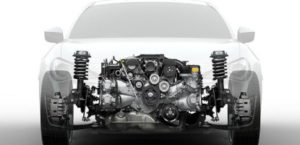The 1.8-liter Volkswagen AAM or Golf 3 1.8 single injection engine appeared in 1990 and until 1998 was installed on such popular models as Golf 3, Vento, Passat B3 and B4. There was an upgraded version of this power unit with its own ANN index.
The EA827 1.8l series includes: RP, AAM, ABS, ADZ, PF, ADR, ARG, AEB, ANB.
Specifications
| Production years | 1990-1998 |
| Displacement, cc | 1781 |
| Fuel system | Mono-Motronic |
| Power output, hp | 75 |
| Torque output, Nm | 140 |
| Cylinder block | cast iron R4 |
| Block head | aluminum 8v |
| Cylinder bore, mm | 81 |
| Piston stroke, mm | 86.4 |
| Compression ratio | 9.0 |
| Features | SOHC |
| Hydraulic lifters | yes |
| Timing drive | belt |
| Phase regulator | no |
| Turbocharging | no |
| Recommended engine oil | 5W-40 |
| Engine oil capacity, liter | 3.8 |
| Fuel type | petrol |
| Euro standards | EURO 1 |
| Fuel consumption, L/100 km (for VW Golf 1993) — city — highway — combined |
9.5 5.5 7.5 |
| Engine lifespan, km | ~320 000 |
The engine was installed on:
- Volkswagen Golf 3 (1H) in 1991 – 1997;
- Volkswagen Passat B3 (31) in 1990 – 1993; Passat B4 (3A) in 1993 – 1996;
- Volkswagen Vento 1 (1H) in 1992 – 1998.
Disadvantages of the VW AAM engine
- In terms of iron, this engine is very reliable and does not even bend the valves when the belt breaks.
- The main problems are caused by suction due to a torn single-injection cushion.
- Also often the throttle position potentiometer fails here.
- The components of the ignition system, sensors, and also the idle speed controller have a small resource.
- When a lambda probe or its wiring burns out, fuel consumption begins to increase sharply.






